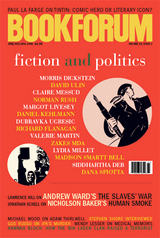
With its Wild West tale of prostitutes, Indians, wagon trains, guns, silver mines, opium, and suicide, Missy, the debut novel by Scottish playwright Chris Hannan, is alternately dazzling in its historical verisimilitude and linguistic playfulness and frustrating—is it intended to entertain or to enlighten? Wrestling with this conundrum may be unavoidable for authors of any work that attempts to consider—or reconsider—the American West for what it really was: a land of lawlessness and cruelty fueled by alcohol, testosterone, and greed. Moreover, what Missy shows (and Hollywood westerns rarely do) is the reality that made manifest destiny possible: the oppression and slaughter of Native Americans, Chinese immigrant labor, and a lot of sedatives.
Set in the mid-nineteenth century, Missy is Dol McQueen’s first-person account of her life and adventures as an opium-addicted prostitute in the western territories. The novel revolves around Dol’s encounter with a crate of opium worth a small fortune and with the fugitive pimp who has stolen the drugs. The opening chapters describe that discovery and the journey Dol makes from San Francisco to Virginia City, Nevada. Along the way, the reader gains insight into the absurd juxtaposition of newfound wealth and vast wilderness. Dol records, on one side, wagons “nose to tail, crawling up the steep grade with eighteen-carat pianos and scrumptious billiard tables . . . and chests of oysters packed in ice,” and, on the other, “falls of a thousand feet” and views of “gigantic pines and firs.” While much of the novel focuses on life in a frontier town and the relationships between Dol, her fellow whores, and her mother, the story is really about addiction—Dol’s to opium, her mother’s to alcohol, and others’ to men, money, and one another.
Whether it’s the case that Robert Altman’s 1971 film McCabe and Mrs. Miller provided inspiration for Missy, comparisons are inevitable, given the similarities between the heroines (both are prostitutes and opium addicts) and a shared meditation on the unheroic and unglamorous realities of the Wild West. Neither shies away from offering the mundane details of shitting, shooting, and fucking in towns with limited indoor plumbing, few doctors, and a population in which men outnumber women ten to one. A john, disappointed at not being able to rush things “through express,” asks “if he might place a pillow o’er [Dol’s] head.” Still unable to “get his gun off,” he asks how she would feel “if he put a smutty picture on the pillow that was o’er [her] head.” Again, she complies, though it still takes another “fifteen minutes more, in total silence,” for the deed to be done.
While Hannan should be applauded for his attention to detail and his tight scene building, one is also left wondering why he took a historical page-turner and combined it with a coming-of-age story about a woman’s dysfunctional relationship with her mother. His talents for writing both historical and literary fiction are on display, but in blending the two genres, his gifts are sampled rather than—forgive the pun—mined. Should he decide to take the literary route in his next outing, the tale might be better served by allowing the reader to be as intrigued by the motivations of his characters as by the choices made by their author.
